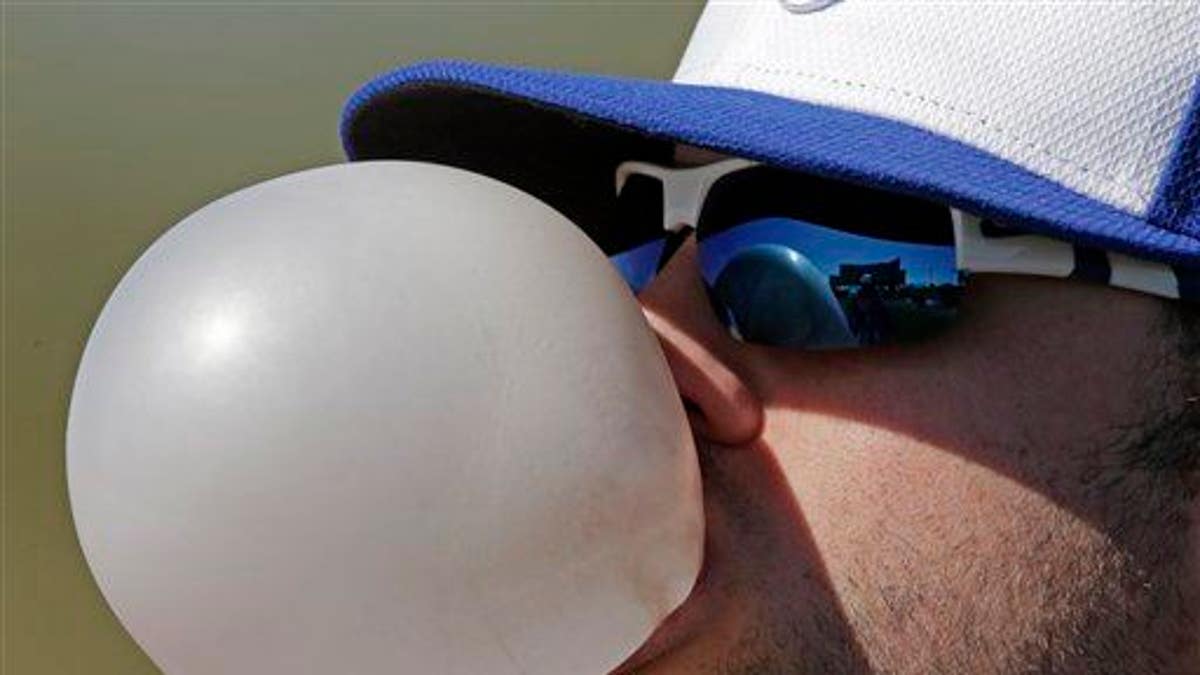
Kansas City Royals third baseman Mike Moustakas blows a chewing gum bubble, removes bacteria from his oral cavity. (AP Photo/Charlie Riedel)
Have a mouth full of cavities? You can maybe blame those teachers who wouldn't let you chew gum in class. Gum gets some scientific analysis in a study titled "Quantification and Qualification of Bacteria Trapped in Chewed Gum" published in PLOS ONE yesterday (and, it should be noted, funded in part by the Wm.
Wrigley Jr. Co). Researchers confirmed that the "chewing of gum can trap bacteria," which can cause cavities, and then remove that bacteria when you spit it out.
And as their study's title suggests, the researchers quantified gum's effectiveness. Five volunteers chewed one of two commercially available pieces of spearmint gum for a span of time ranging from 30 seconds to 10 minutes "according to their own personal routine without specific instructions for chewing." Chewers then spit the gum into a cup containing sterile water.
"Around 108"—that's 100,000,000—"bacteria were detected per gum piece depending on the method and gum considered," they write. Brushing with a new toothbrush (somewhat inexplicably) without toothpaste on it reportedly removes the same amount, "which would put chewing of gum on par with the mechanical action" of said brush.
Real Clear Science points out that the researchers noted more species of bacteria were reeled in by longer chewing times, but that adhesiveness begins to diminish after thirty seconds.
Write the researchers, this causes "a release of initially trapped, more weakly adhering bacteria from the gum." What the research could lead to: "the development of gum that selectively removes specific disease-related bacteria from the human oral cavity." (A tragic flipside: chewing gum likely killed a college student over the weekend.)
This article originally appeared on Newser: How Chewing Gum Makes Your Mouth Healthier
More From Newser
